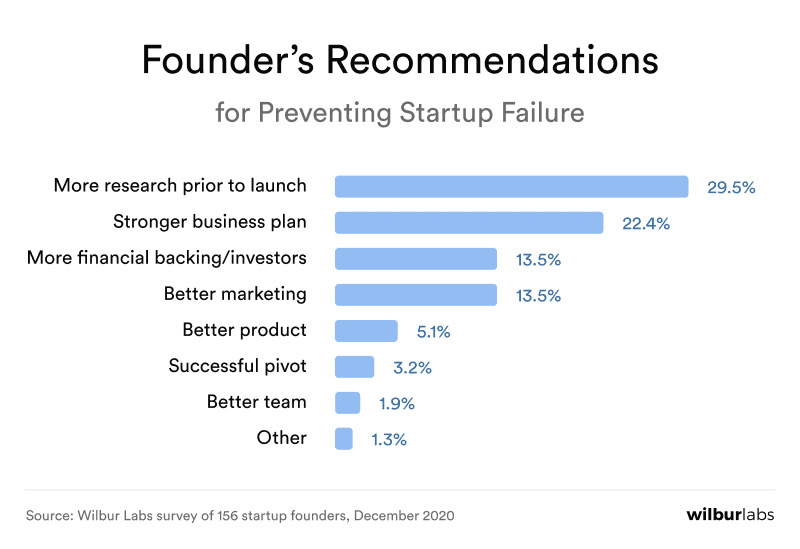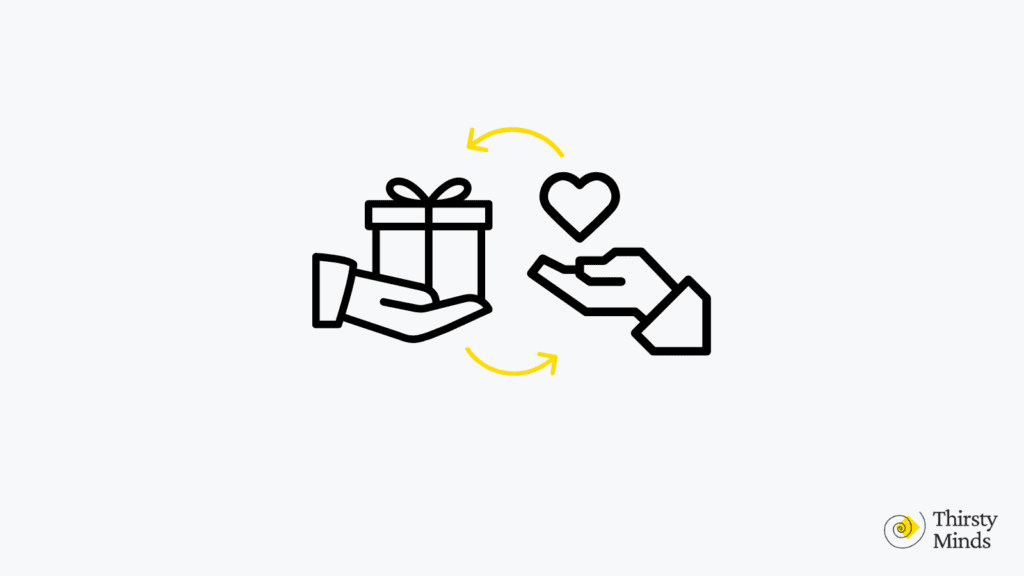It has been many years, but I never forget what a founder said: “If one day I fail, it will be painful.”
That was the time when her wearable startup was at its peak. She had fame. She had everything a founder dreamed of. The press kept praising her. And yet, she was scared of what would happen if she failed and how the press would talk about her.
We all know it hurts when our startups fail, but the fear of being hurt stays with us even when we are successful. We went from zero to one, and we are afraid that we can go back to zero on a rainy day.
I strongly believe that while there is no way to control the uncertainty that triggers our fear of failure, there must be some ways that make our journeys easier. One of those ways is through mental models.
What are mental models?
Mental models are the frameworks that human minds use for thinking and making sense of the world. There are thousands of models from different disciplines. You might have some of them “installed” in your mind, but you still need to learn many more.
For example, you might not be familiar with the term recency bias. After googling a bit, you realize that you are also influenced by this bias but you don’t call it by the same name. Recency bias is the phenomenon in which people have a stronger impression of the most recent information (e.g. the final slide, the last paragraph).
There are other mental models, such as the ICE model and Founder’s Syndrome, that you might not know unless you read the books or learn about them from somewhere.
Simply put, using mental models is like borrowing the minds of the most clever people to think at will. Mastering them helps you see the whole picture, avoid blind spots and become a better decision-maker.
I believe in the discipline of mastering the best that other people have ever figured out. I don’t believe in just sitting down and trying to dream it all up yourself. Nobody’s that smart.
— Charlie Munger
What are the mental models that matter to founders?
Elon Musk, Charlie Munger, Jeff Bezos, and many entrepreneurs of our age are using mental models as success leverage so there is almost no reason for founders not to give a buy-in.
But the problem is it’s hard to remember and master so many models. So, this post shortlists the most relevant mental models for founders in an easy way to memorise. You may want to save this summary to remind you to apply those models often.
The table of contents is divided into 4 categories based on the top advice of 156 founders (see the table below). You absolutely can use any mental model for any situation you see fit.

Mental model list
Research
Confirmation Bias
Be aware of searching for or interpreting information in a way that confirms your ideas, thoughts.

How often – I continue reflecting – is it that we see what we want to see, rather than what is really before our eyes. In the trade, we call this confirmation bias, and our brains are riddled with it. We take a position on something and thereafter only see whatever confirms that position, ignoring all evidence to the contrary.
― John Dolan, Everyone Burns
Availability Bias
Be aware of counting only on available information when assessing a particular topic, method or decision.

We are all vulnerable to manipulation. We make judgments based on the information available to us, but we are all susceptible to manipulation when our access to that information becomes mediated. Over time, our biases can become amplified without our even realising it.
— Christopher Wylie, Mindf*ck: Inside Cambridge Analytica’s Plot to Break the World
Bandwagon Effect
Be aware of supporting certain behaviours or attitudes simply because others are doing so.

When you hear the same story everywhere you look and listen, you assume it must be true. And the more people believe it’s true, the more likely they are to repeat it, and thus the more likely you are to hear it. This is how inaccurate information can create a bandwagon effect, leading quickly to a broad, but mistaken, consensus.
― Barry Schwartz, The Paradox of Choice: Why More Is Less
Mistakes that will be made
Stand on the shoulders of giants by learning from other founders’ mistakes and applying the lessons flexibly.

Learn from the mistakes of others. You can’t live long enough to make them all yourself.
― Eleanor Roosevelt
Reasoning For Planning
Circle Of Competence
Learn about yourself to know what you know and where you need help.

Know your circle of competence, and stick within it. The size of that circle is not very important; knowing its boundaries, however, is vital.
— Warren Buffet
Backward Reasoning
Start with goals and look for the initial conditions that form a path to them.

I always try to start out with some type of goal. Then I work backwards and think of what I need to do to get there and give myself smaller goals that are more immediate.
— Kristi Yamaguchi
Inversion
Think of the unwanted outcomes and plan to avoid them.

Invert, always invert: Turn a situation or problem upside down. Look at it backwards. What happens if all our plans go wrong? Where don’t we want to go, and how do you get there? Instead of looking for success, make a list of how to fail instead. Tell me where I’m going to die, that is, so I don’t go there.
— Charlie Munger
First Principles Thinking
Break complex things into the most fundamental truths to reason.

First principles is kind of a physics way of looking at the world, and what that really means is, you … boil things down to the most fundamental truths and say, “okay, what are we sure is true?” … and then reason up from there.
― Elon Musk
Second Level Thinking
Keep questioning (e.g. “what’s next?”) to understand the situation from a higher perspective and to compare the decision’s short and long-term impacts.

Failing to consider second-and third-order consequences is the cause of a lot of painfully bad decisions, and it is especially deadly when the first inferior option confirms your own biases. Never seize on the first available option, no matter how good it seems, before you’ve asked questions and explored.
— Ray Dalio, Principles
Leverage
Exchange resources (e.g. time, energy) in a way that maximises the outputs.

A manager must keep many balls in the air at the same time and shift his energy and attention to activities that will most increase the output of his organization. In other words, he should move to the point where his leverage will be the greatest.
— Andrew S. Grove, High Output Management
Thought Experiment
Use imagination to think through the consequences of a vision, hypothesis, or idea.

Thought experiment is in any case a necessary precondition for physical experiment. Every experimenter and inventor must have the planned arrangement in his head before translating it into fact.”
– Ernst Mach
Thinking Grey
Pause on instant judgments and sleep on decisions to gather more information if time permits.

Most people are binary and instant in their judgments; that is, they immediately categorize things as good or bad, true or false, black or white, friend or foe. A truly effective leader, however, needs to be able to see the shades of gray inherent in a situation in order to make wise decisions as to how to proceed.
— Steven Sample, The Contrarian’s Guide to Leadership
Probabilistic Thinking
Think how likely a consequence happens in the light of other reasoning mental models.

How do we learn to make better decisions? In part, by training ourselves to think probabilistically. To do that, we must force ourselves to envision various futures—to hold contradictory scenarios in our minds simultaneously—and then expose ourselves to a wide spectrum of successes and failures to develop an intuition about which forecasts are more or less likely to come true.
— Charles Duhigg, Smarter Faster Better: The Secrets of Being Productive
Finance and Growth
Opportunity Cost
Choose the option that makes the least OC (Opportunity Cost = Returns On Best Foregone Option − Returns On Chosen Option).

There is an opportunity cost for everything we do. This is why we must have the awareness to ensure that what we are pursuing is really what we value because the pursuit leaves countless lost opportunities in its wake. We choose one experience at the sacrifice of all other experiences.
— Chris Matakas
Margin Of Safety
Allow a margin of safety or room for not being knocked down completely when trying anything.

When you build a bridge, you insist that it can carry 30,000 pounds, but you only drive 10,000 pound trucks across it. You require a margin of safety, and rightly so.
— Warren Buffet
Diminishing Returns
Be aware that continued effort can be diminished in performance after an optimal level.

As long as my heart’s still in it, I’ll keep going. If the passion’s there, why stop?… There’ll likely be a point of diminishing returns, a point where my strength will begin to wane. Until then, I’ll just keep plodding onward, putting one foot in front of the other to the best of my ability. Smiling the entire time.
— Dean Karnazes
Loss Aversion
Be aware of your tendency to respond more strongly to losses than to gains.

One reason is that we let our fears fester and grow, unchallenged, in our heads. We don’t examine them in the cold light of day and see what they’re made of. Another reason is that we are loss averse. We feel the pain of loss much more than the pleasure of gain. We pay greater attention to potential losses than gains, and we’re inclined to avoid possible setbacks more than we are to seek potential wins.
— Diane Mulcahy, The Gig Economy
Sunk Cost Fallacy
Be aware of your tendency not to cut losses from an ineffective endeavour just because you invested so many resources in it.

The sunk cost fallacy is most dangerous when we have invested a lot of time, money, energy, or love in something. This investment becomes a reason to carry on, even if we are dealing with a lost cause. The more we invest, the greater the sunk costs are, and the greater the urge to continue becomes.
— Rolf Dobelli, The Art of Thinking Clearly
Compounding
Remind yourself to check the key metrics regularly as they may be influenced by the compound effect – interest earns interest over time.

We encourage every startup to measure their progress by weekly growth rate. If you have 100 users, you need to get 10 more next week to grow 10% a week. And while 110 may not seem much better than 100, if you keep growing at 10% a week you’ll be surprised how big the numbers get. After a year you’ll have 14,000 users, and after 2 years you’ll have 2 million.
— Paul Graham, Do Things That Don’t Scale
Psychology for Marketing
Social Proof
Show your customers the proof of others buying your products, following your Twitter, etc., and they may join the crowd.

The principle of social proof says so: The greater the number of people who find any idea correct, the more the idea will be correct… We will use the actions of others to decide on proper behaviour for ourselves, especially when we view those others as similar to ourselves… When we are uncertain, we are willing to place an enormous amount of trust in the collective knowledge of the crowd.
— Robert B. Cialdini
Mere-exposure effect
Repeat the things that matter (e.g. messages, logo) as customers develop a preference for familiar things.

When the repeated words or pictures are shown so quickly that the observers never become aware of having seen them. They still end up liking the words or pictures that were presented more frequently. As should be clear by now, System 1 can respond to impressions of events of which System 2 is unaware. Indeed, the mere exposure effect is actually stronger for stimuli that the individual never consciously sees.
— Daniel Kahneman, Thinking, Fast and Slow
Halo effect
Make sure to leave good impressions (e.g. beautiful designs) across your touchpoints as an impression formed in one area influences opinions in other areas.

Beauty has a kind of blinding effect on our judgment. For instance, research shows we judge writing more favourably if we find the author attractive. This could be because of the halo effect we discussed earlier, where someone with one positive quality—beauty, in this case—is assumed also to have others. Or in some cases, people may rate beautiful people highly on other attributes just to curry favour with them.
— John Neffinger, Compelling People: The Hidden Qualities That Make Us Influential
Reciprocity
Always find ways to help your customers sincerely (e.g. free content, tools) as people usually respond to your kind action with another kind of action.

The law of reciprocity: The person who gives first is usually the one who ends up with the most.
—Blair Singer
Books that mention mental models
- Anaximander – Carlo Rovelli
- Antifragile – N.N. Taleb
- Influence – Robert Cialdini
- Mastery – Robert Greene
- Metaphors We Live By – George Lakoff
- Poor Charlie’s Almanack – Peter Kaufman
- Predictably Irrational: The Hidden Forces That Shape Our Decisions – Dan Ariely
- Range: How Generalists Triumph in a Specialized World – David Epstein
- Reality Is Not What It Seems: The Journey to Quantum Gravity – Carlo Rovelli
- Seeking wisdom: From Darwin to Munger – Peter Bevelin
- Super Thinking – Gabriel Weinberg & Lauren McCann
- Surely You’re Joking, Mr. Feynman – Richard Feynman
- The Art of Thinking Clearly – Rolf Dobelli
- The Beginning of Infinity – David Deutsch
- The Daily Stoic – Ryan Holiday, Stephen Hanselman
- The Great Mental Models – Shane Parrish (vol.1&2)
- The Model Thinker – Scott Page
- Thinking Fast & Slow – Daniel Kahneman
- Thinking in Bets – Annie Duke
Hope this post is informative to you. Your opinions are welcomed in the comment section.
